Intermarkets' Privacy Policy
Donate to Ace of Spades HQ!
aceofspadeshq at gee mail.com
Buck:
buck.throckmorton at protonmail.com
CBD:
cbd at cutjibnewsletter.com
joe mannix:
mannix2024 at proton.me
MisHum:
petmorons at gee mail.com
J.J. Sefton:
sefton at cutjibnewsletter.com
Daily Tech News 21 December 2025
Saturday Night "Club ONT" December 20, 2025 [The 3 Ds]
A House Of DEI [Lex]
Hobby Thread - December 20, 2025 [Ornamental Rex]
Ace of Spades Pet Thread, December 20
Gardening, Home and Nature Thread, Dec 20
Getting what you ask for before Christmas, or not
The
Daily Tech News 20 December 2025
Jim Sunk New Dawn 2025
Jewells45 2025
Bandersnatch 2024
GnuBreed 2024
Captain Hate 2023
moon_over_vermont 2023
westminsterdogshow 2023
Ann Wilson(Empire1) 2022
Dave In Texas 2022
Jesse in D.C. 2022
OregonMuse 2022
redc1c4 2021
Tami 2021
Chavez the Hugo 2020
Ibguy 2020
Rickl 2019
Joffen 2014
maildrop62 at proton dot me
TBD
Saturday Gardening and Puttering Thread
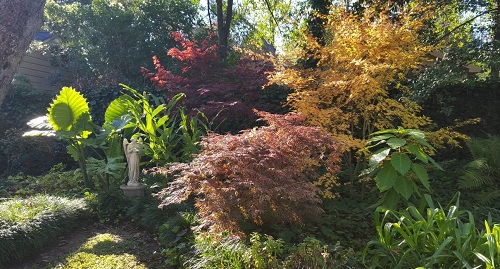
Almost the middle of December, and Tom Servo is still gardening! Outdoors! With broadleaf trees!
Got another photo! Planted 3 Japanese maples in my back yard about 10 years ago; a dwarf lace, a burgundy, and a coral bark. (light gold leaves in the fall) This is the time of year when they are at their best!
Intriguing trees. And the rest of the garden looks nice in December, too. Now for something Christmas-y from Garden & Gun:
The Southern History of the Poinsettia
Joel Poinsett is to the poinsettia what Christopher Columbus is to America; a lot of folks like to say he discovered it, but someone was definitely already there. "Poinsett was a diplomat who facilitated the trade of plants," says Jim Faust, a Clemson University horticulture professor who studies poinsettias. "He built a network of people interested in plants because he saw it as an economic opportunity for South Carolina."Deeply Rooted
Originally from Charleston, South Carolina, Poinsett was dispatched to Mexico by President James Monroe in 1825. . .
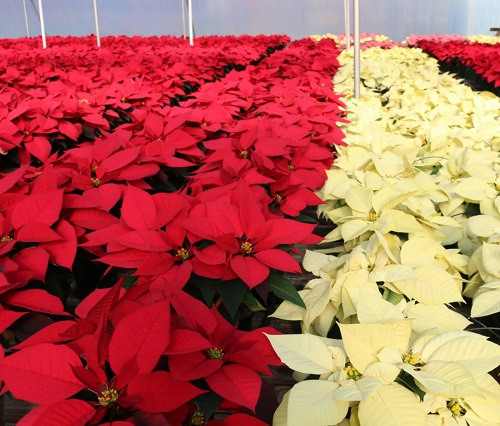
Edible Gardening
Also from Garden & Gun, The Mad Scientist of Paw-Paws:
Largely the domain of foragers, the biggest edible fruit in the South has mostly been forgotten. A quietly obsessed Quaker from West Virginia has made it his life's mission to change that.
Fun reading.
The ripe pawpaw was firm but yielding, like an avocado. I cut it open, sucked the flesh from the peel, and spat out the big, flat seeds. The flesh was yellow orange with a luscious texture, almost like a custard. But it was the taste--luxurious, sweet, with a long finish--that threw me. It tasted tropical, the fruit of a tree rooted in Costa Rica with three-thousand-mile-long branches. The flavor was not unlike a banana. It also had hints of mango and papaya, even pineapple. But none of the "tastes like" descriptors do it justice. A pawpaw tastes like a pawpaw. There's nothing else like it.Pawpaws are having something of a moment these days. Throughout the fruit's native range--it grows wild in twenty-six states, including most of the South and as far north as Michigan--craft brewers are making pawpaw beer and ale. You can find pawpaw ice cream in high-end restaurants. Facebook groups like Pawpaw Fanatics count several thousand followers posting trophy photos of their finds. Lori Mackintosh, who runs a you-pick fruit and vegetable farm in Berryville, Virginia, that supplies pawpaws, says she can spot people who want them as soon as they get out of their cars. When I ask how, she says, "Well, dreadlocks and BO," then laughs at her own description.
Don't plan on getting quality fruit from wild plants, necessarily. The "Mad Scientist" is a hybridizer.
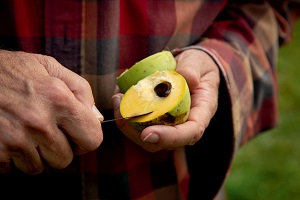
Critters
From CaliGirl:
This fox was rubbing his face on the sofa and rolling around. He was really cute.
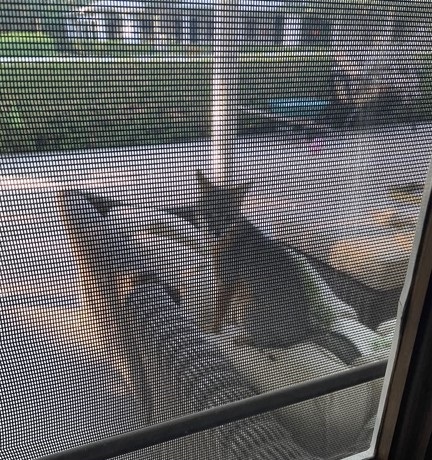
What a face!
From By-Tor:
While the family was shopping at South Coast Plaza, I busied myself with some bird photography five miles away at the San Joaquin Wildlife Sanctuary. The hummingbirds and most passerines have moved on but still got a great egret, lots of white pelicans and a pair of phoebes - a Say's Phoebe and a Black Phoebe.
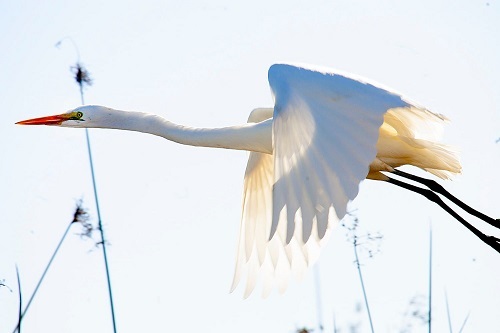
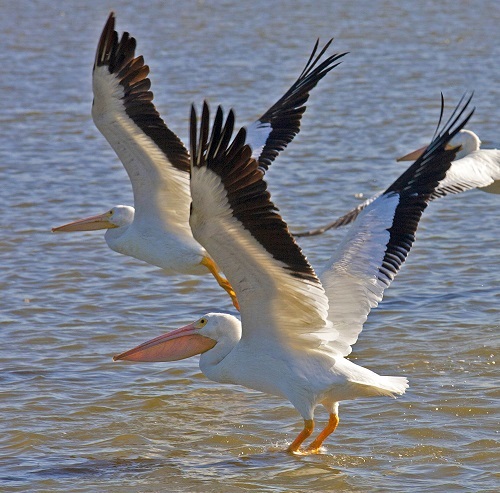
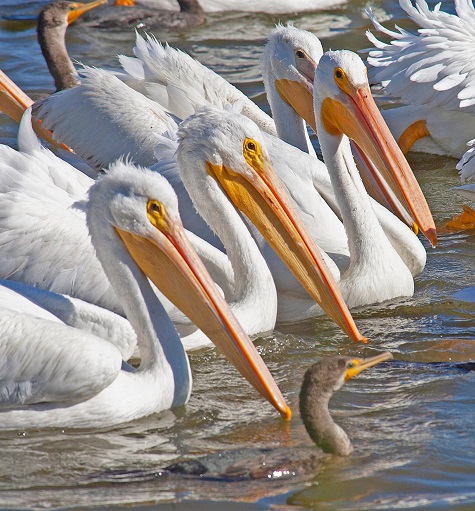
Two of these things are not like the others.
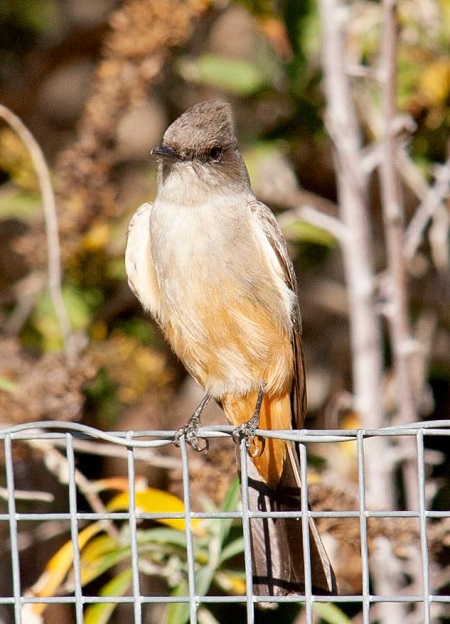
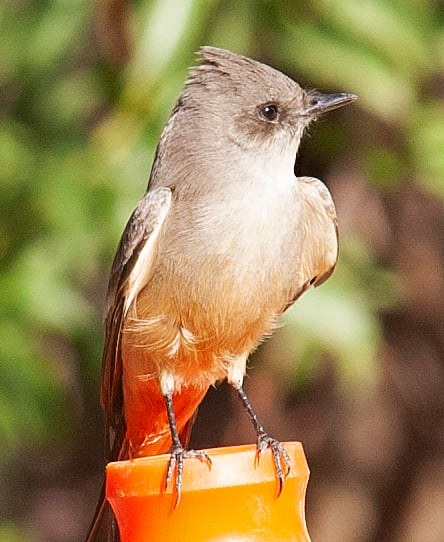
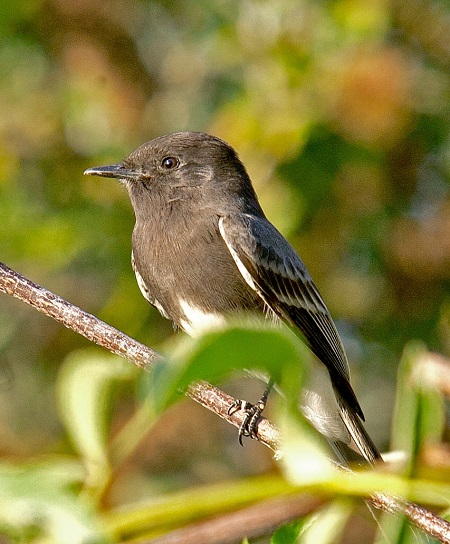
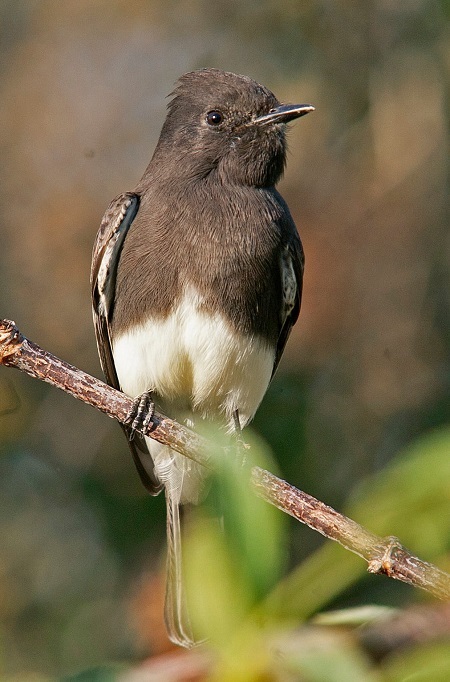
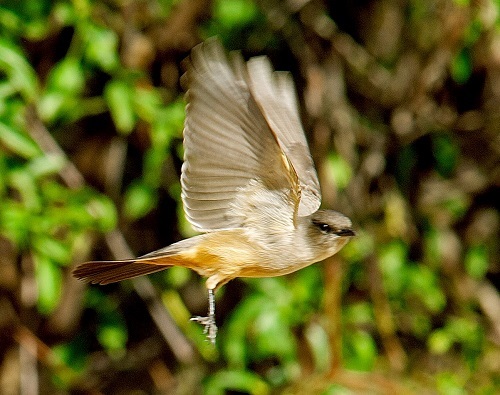
Trees Falling Down
We had a great discussion in last week's thread about trees falling down. With news of the terrible tornado, some of this discussion becomes more relevant. Nature is not always kind. Don't comment on old threads.
Removing a stump the easy way (not the quick way).
If you would like to send information and/or photos for the Saturday Gardening Thread, the address is:
ktinthegarden
at that g mail dot com place
Include the nic by which you wish to be known when you comment at AoSHQ,
unless you want to remain a lurker.
SpeakingOf: "221 Robotd won't be allowed to kill a human being, ..."
The Book of James, Chapter 1: "222 Wisdom is of spiritual origin. Posted by: U ..."
Skip : "Head upstairs its BOOK NOOD TIME ..."
Skip : "Tolle Lege ..."
Miguel cervantes: "Also hamas and taliban fanboi like robert malley a ..."
m: "226 Nick Sortor @nicksortor Dec 19 🚨 W ..."
San Franpsycho: "We are listening to KCBS radio for updates and it ..."
m: "221 Robotd won't be allowed to kill a human being, ..."
Smell the Glove : "The first thing the robots will do when they take ..."
Miguel cervantes: "Nephew of adnan qatari agent ..."
Quarter Twenty : " Nick Sortor @nicksortor Dec 19 🚨 WTF? ..."
Daily Tech News 21 December 2025
Saturday Night "Club ONT" December 20, 2025 [The 3 Ds]
A House Of DEI [Lex]
Hobby Thread - December 20, 2025 [Ornamental Rex]
Ace of Spades Pet Thread, December 20
Gardening, Home and Nature Thread, Dec 20
Getting what you ask for before Christmas, or not
The
Daily Tech News 20 December 2025
Paul Anka Haiku Contest Announcement
Integrity SAT's: Entrance Exam for Paul Anka's Band
AllahPundit's Paul Anka 45's Collection
AnkaPundit: Paul Anka Takes Over the Site for a Weekend (Continues through to Monday's postings)
George Bush Slices Don Rumsfeld Like an F*ckin' Hammer
Democratic Forays into Erotica
New Shows On Gore's DNC/MTV Network
Nicknames for Potatoes, By People Who Really Hate Potatoes
Star Wars Euphemisms for Self-Abuse
Signs You're at an Iraqi "Wedding Party"
Signs Your Clown Has Gone Bad
Signs That You, Geroge Michael, Should Probably Just Give It Up
Signs of Hip-Hop Influence on John Kerry
NYT Headlines Spinning Bush's Jobs Boom
Things People Are More Likely to Say Than "Did You Hear What Al Franken Said Yesterday?"
Signs that Paul Krugman Has Lost His Frickin' Mind
All-Time Best NBA Players, According to Senator Robert Byrd
Other Bad Things About the Jews, According to the Koran
Signs That David Letterman Just Doesn't Care Anymore
Examples of Bob Kerrey's Insufferable Racial Jackassery
Signs Andy Rooney Is Going Senile
Other Judgments Dick Clarke Made About Condi Rice Based on Her Appearance
Collective Names for Groups of People
John Kerry's Other Vietnam Super-Pets
Cool Things About the XM8 Assault Rifle
Media-Approved Facts About the Democrat Spy
Changes to Make Christianity More "Inclusive"
Secret John Kerry Senatorial Accomplishments
John Edwards Campaign Excuses
John Kerry Pick-Up Lines
Changes Liberal Senator George Michell Will Make at Disney
Torments in Dog-Hell
The Ace of Spades HQ Sex-for-Money Skankathon
A D&D Guide to the Democratic Candidates
Margaret Cho: Just Not Funny
More Margaret Cho Abuse
Margaret Cho: Still Not Funny
Iraqi Prisoner Claims He Was Raped... By Woman
Wonkette Announces "Morning Zoo" Format
John Kerry's "Plan" Causes Surrender of Moqtada al-Sadr's Militia
World Muslim Leaders Apologize for Nick Berg's Beheading
Michael Moore Goes on Lunchtime Manhattan Death-Spree
Milestone: Oliver Willis Posts 400th "Fake News Article" Referencing Britney Spears
Liberal Economists Rue a "New Decade of Greed"
Artificial Insouciance: Maureen Dowd's Word Processor Revolts Against Her Numbing Imbecility
Intelligence Officials Eye Blogs for Tips
They Done Found Us Out, Cletus: Intrepid Internet Detective Figures Out Our Master Plan
Shock: Josh Marshall Almost Mentions Sarin Discovery in Iraq
Leather-Clad Biker Freaks Terrorize Australian Town
When Clinton Was President, Torture Was Cool
What Wonkette Means When She Explains What Tina Brown Means
Wonkette's Stand-Up Act
Wankette HQ Gay-Rumors Du Jour
Here's What's Bugging Me: Goose and Slider
My Own Micah Wright Style Confession of Dishonesty
Outraged "Conservatives" React to the FMA
An On-Line Impression of Dennis Miller Having Sex with a Kodiak Bear
The Story the Rightwing Media Refuses to Report!
Our Lunch with David "Glengarry Glen Ross" Mamet
The House of Love: Paul Krugman
A Michael Moore Mystery (TM)
The Dowd-O-Matic!
Liberal Consistency and Other Myths
Kepler's Laws of Liberal Media Bias
John Kerry-- The Splunge! Candidate
"Divisive" Politics & "Attacks on Patriotism" (very long)
The Donkey ("The Raven" parody)

